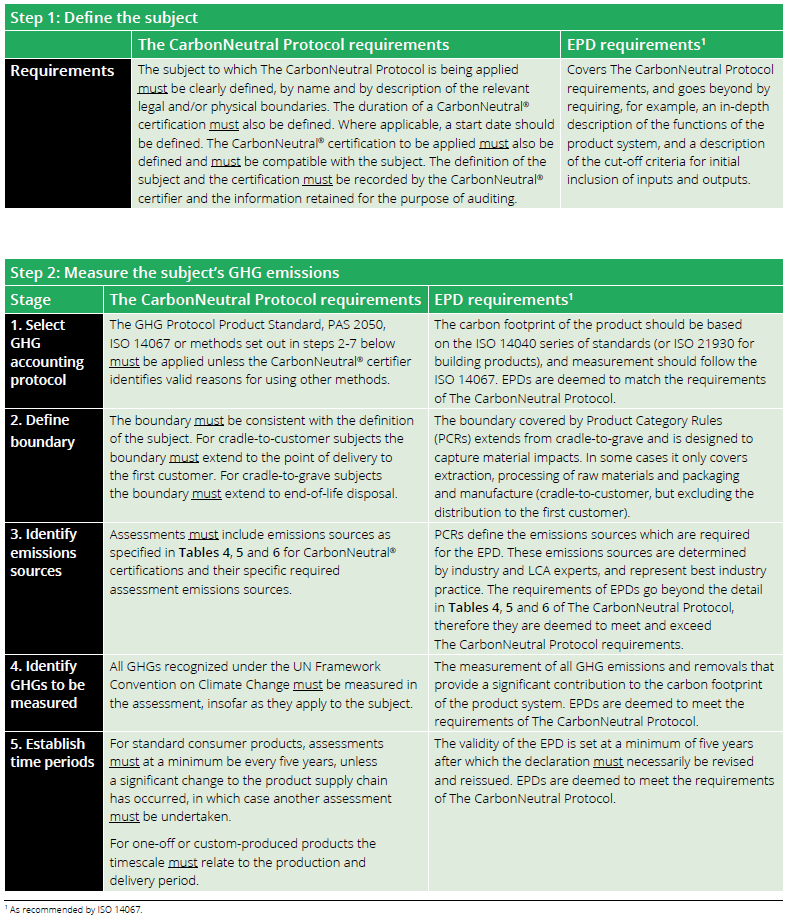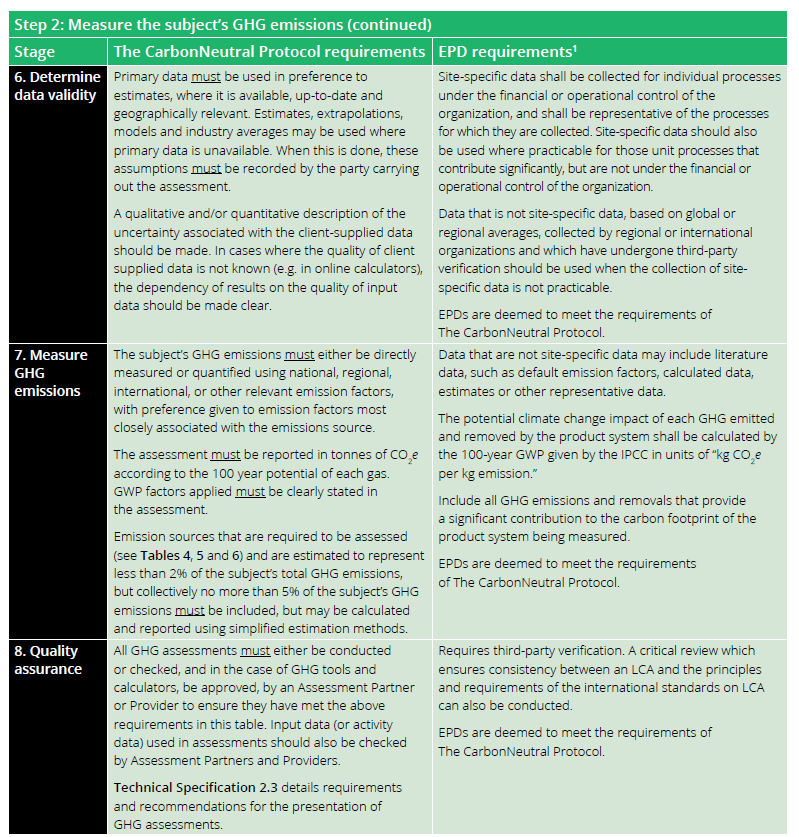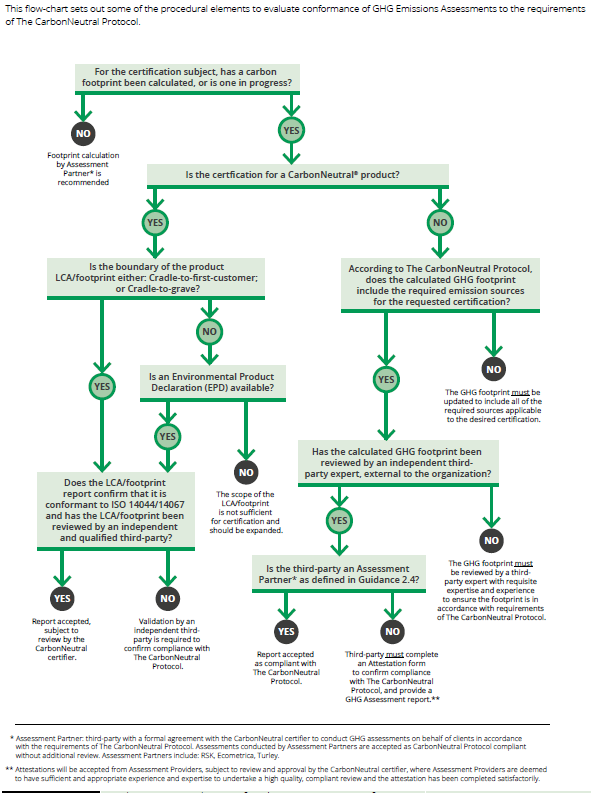Environmental Product Declarations (EPDs) are an alternative way to demonstrate achievement of Steps 1 and 2 of the CarbonNeutral® certification process for products. Step 1 covers the definition of the subject and Step 2 covers measurement of the subject’s GHG emissions.
An EPD is a type III environmental label meaning it declares the environmental impacts of a product over its expected life. EPDs can be thought of as the environmental equivalent to nutrition labels for food products, stating a product’s carbon footprint and other environmental impacts such as resource depletion, acidification, and eutrophication. It is a comprehensive, voluntary, internationally recognized report that compiles and standardizes technical LCA information, eliminating the need to contend with numerous individual documents.
Figure 7 demonstrates how the integrity of EPDs is established by the application of a variety of third-party standards and processes:
Given the rigor applied to the development of Product Category Rules (PCRs), the strict requirements of ISO LCA methodologies and the need for independent third-party verification, The CarbonNeutral Protocol recognizes that EPDs provide robust, high quality GHG measurement outputs.
There may be minor differences in requirements of The CarbonNeutral Protocol relative to an EPD. EPD product category rules for any given subject will by definition be more relevant to the subject than the general requirements of The CarbonNeutral® product certification. Therefore, where there are differences, the EPD prevails and is deemed to have met the requirements of The CarbonNeutral Protocol. Table 9 explores some of these requirements in more detail.



